Australian Tropical Rainforest Plants - Online edition
Syzygium argyropedicum B.Hyland
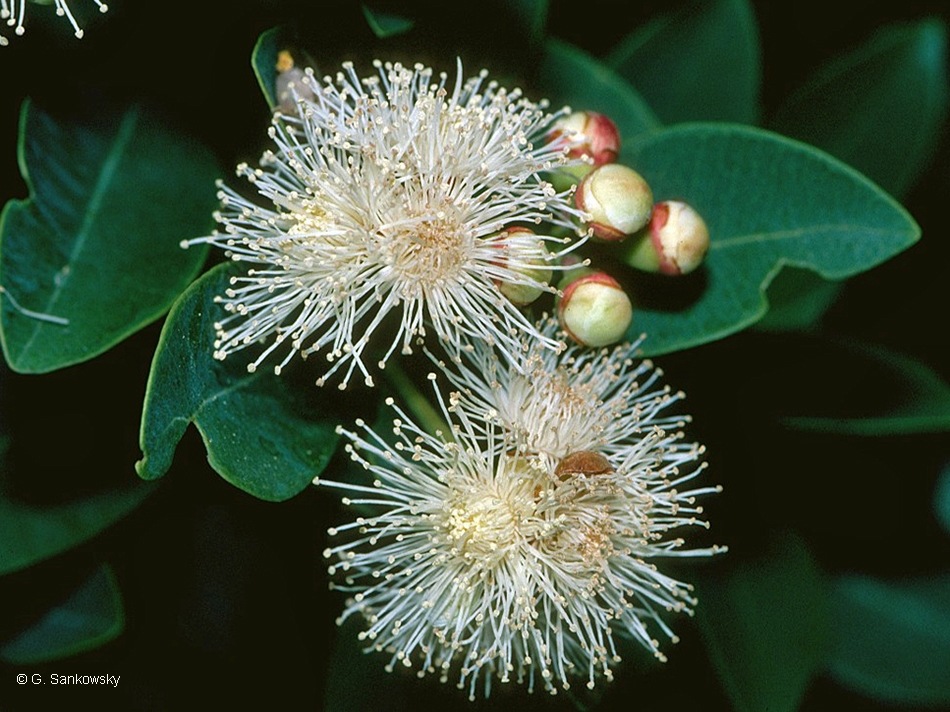
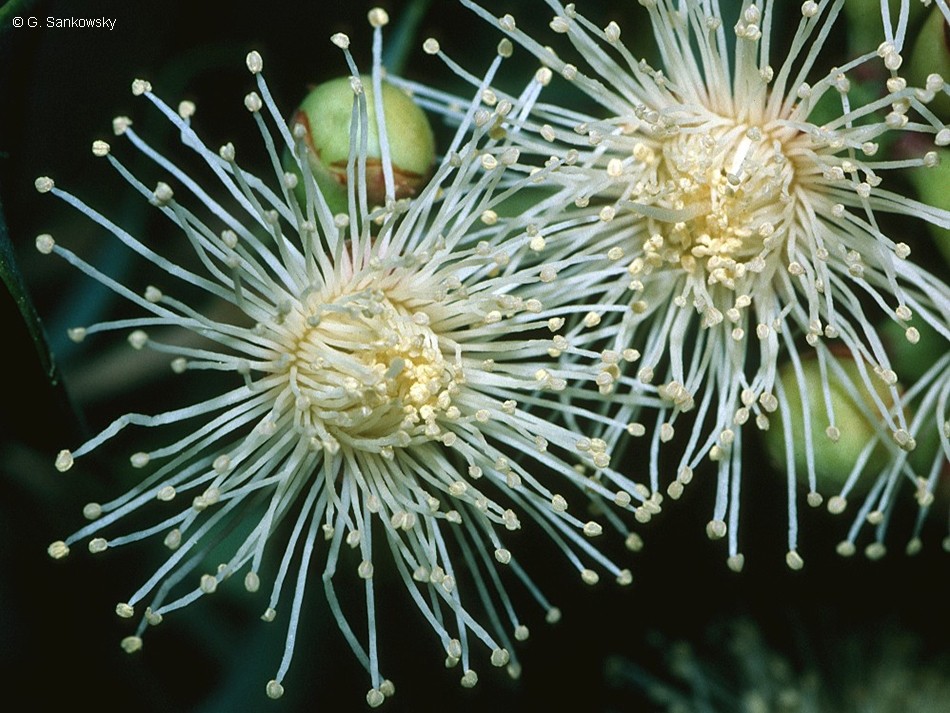
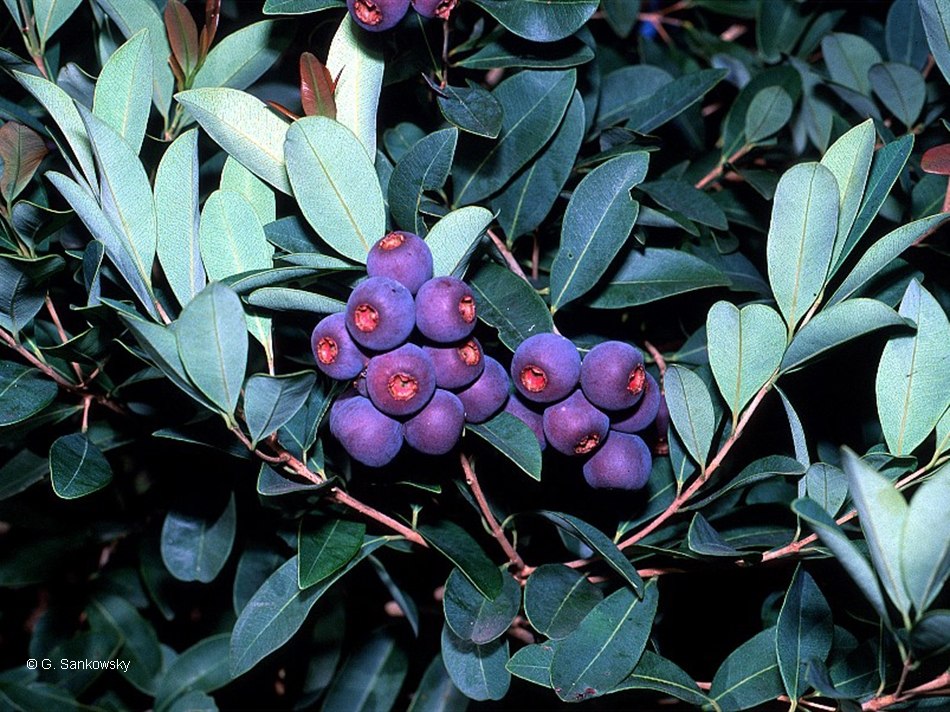
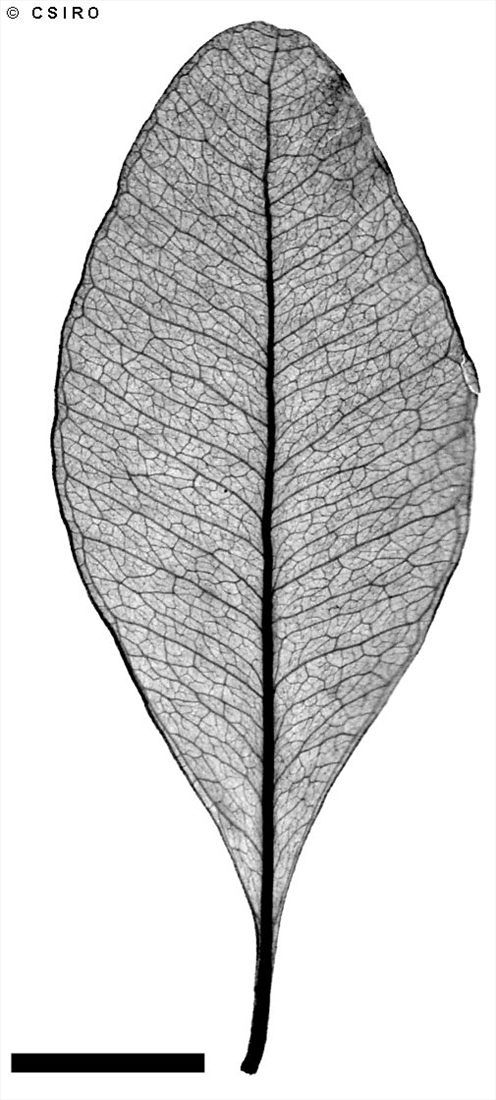


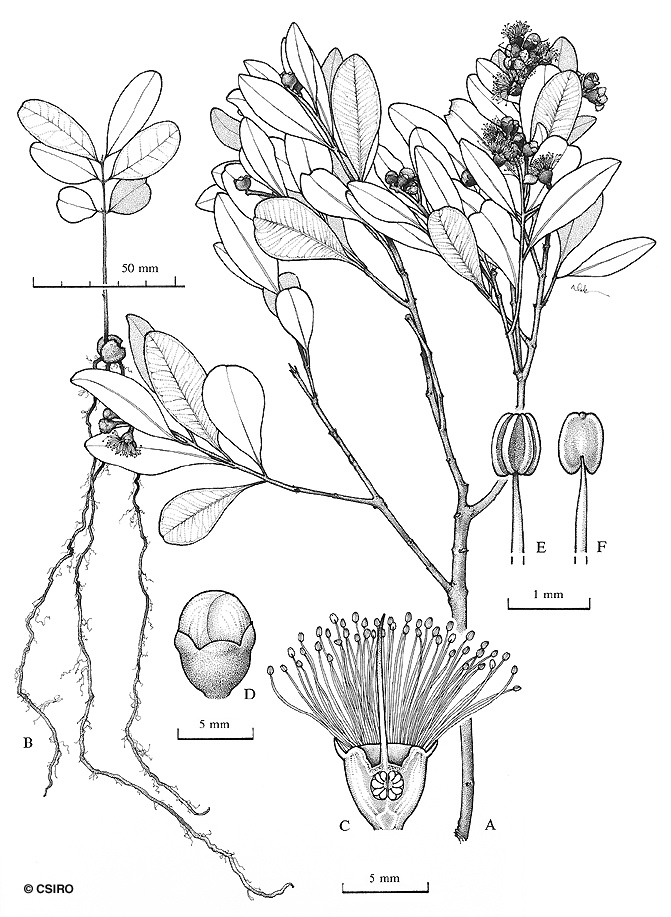
Hyland, B.P.M. (1983) Australian Journal of Botany Supplementary Series 9: 52. Type: B. Hyland 10144: between Massy Creek and Rocky Rivers, 8.xii.1979 (holotypus, QRS).
Bark rather pale, somewhat scalloped, varying from nondescript to coarsely flaky. Individual bark flakes up to 20 x 5 cm.
Bracts caducous, absent at anthesis. Flowers sessile or very shortly pedicellate, calyx tube (hypanthium) tapering to a comparatively robust base, calyx tube (hypanthium) + pedicel about 4-5 mm long, tube (hypanthium) about 4-5 mm diam., calyx lobes rounded, about 1-1.5 mm long, margins scarious. Petals orbicular, about 4-5 mm diam., oil dots visible, more numerous towards the base of the petal, more than 30 per petal. Outer staminal filaments about 4 mm or more long, anthers about 0.6 x 0.4 mm or larger, gland small, +/- terminal, near the back of the anther. Ovules about 18-25 per locule, placentas axile, central, ovules radiating, ascending. Style about 4 mm or more long, approximating the stamens.
Fruits depressed globular, attaining about 15-20 x 20-28 mm, calyx lobes +/- persistent, chartaceous, often recurved, about 1.5-2 mm long. Seed solitary, attaining about 12-22 mm diam., testa slightly attached to the fleshy pericarp but free from the smooth surface of the uniformly textured cotyledons. Radicle lateral or basal, cotyledonary stipules present.
Endemic to Queensland. Occurs in CYP and NEQ. Known only from the Olive River, the Rocky River and Massy Creek area on Silver Plains Holding and the Howick River. Altitudinal range probably small, from near sea level to 80 m. Grows in rain forest and low closed forest on old sand dunes.
Because of its rarity, this species has never been utilized commercially.
Wood specific gravity 0.94. Hyland (1983).





